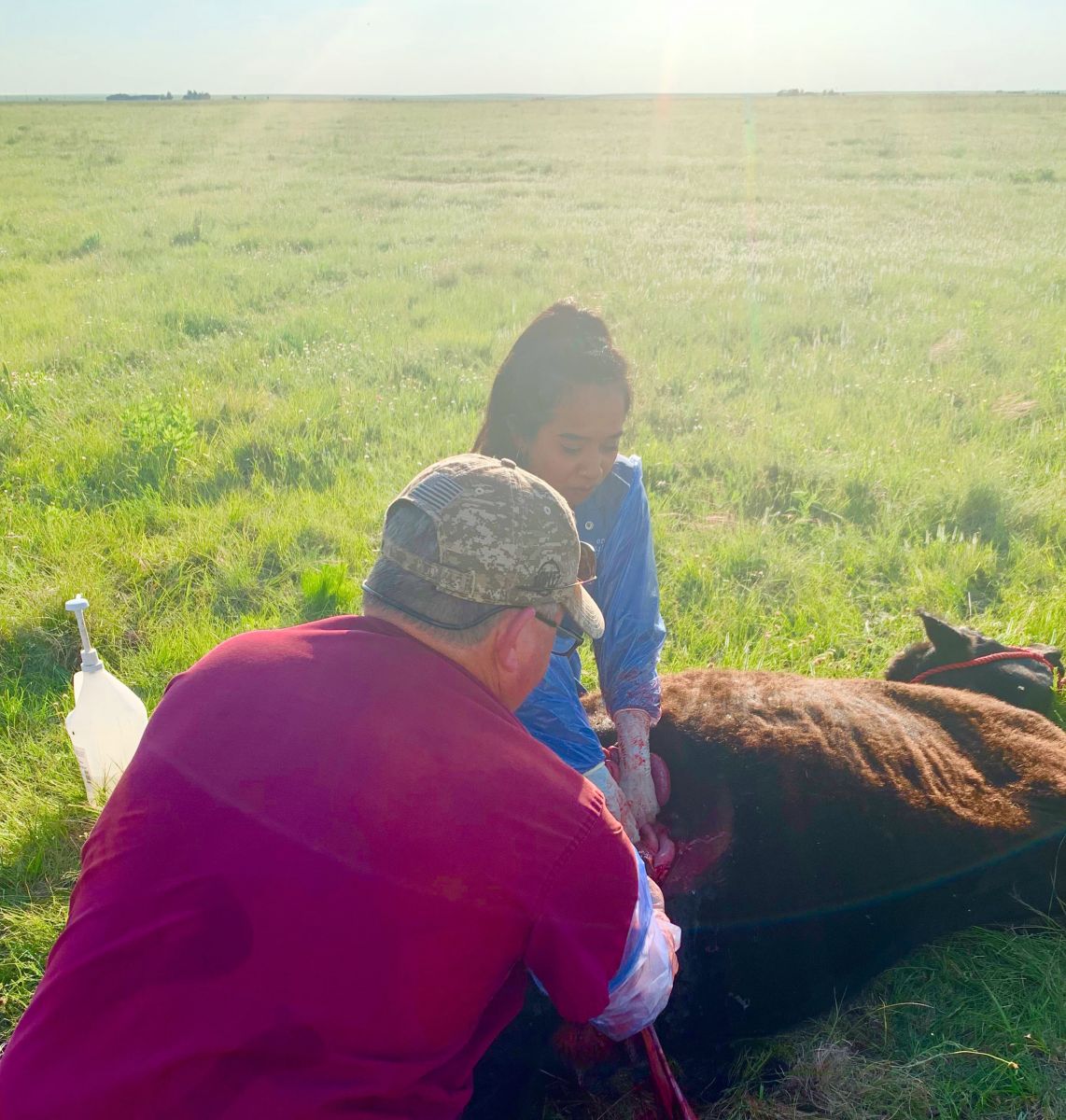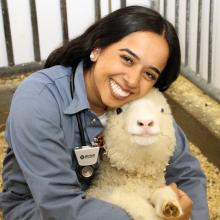There is no such thing as an “easy day” or “easy week” at the Gray County Veterinary Clinic – a morning packed with surgeries, an afternoon filled with appointments and a handful of off-hour emergencies is what I’ve gotten accustomed to. I wouldn’t have it any other way but after a 55-hour week of being on my feet and continuously using my brain, I typically look forwards to a Friday night of doing absolutely nothing. There was one particular Friday where I did the very opposite of kicking up my feet and relaxing.
It was around 6:30 p.m. on a Friday and we were just about wrapping up to head home when we got a call from a farmer saying that she had a cow in distress and needed help immediately. We got a brief history and discovered that the cow had been in labour and was having a hard time delivering her calf. I was exhausted but was there any chance I’d miss out on the opportunity to assist with a calving? Absolutely not. I quickly got my coveralls on and we jumped in the pickup to see how we could help.
Now when I was at OVC, I distinctly remember one of our large animal professors teaching us about having to do a surgery or a procedure in the middle of a pasture – we learned that you had to make use of what you had and that everything was not going to be perfectly sterile. At the time, I figured that it was a rare occurrence that anyone had to do anything on a pasture and that it wasn’t  anything I’d ever have to concern myself with. Perhaps that was naïve of me, but we had spent so much time in pristine surgery suites, I never pictured myself doing a surgery outside the comfort of a well-equipped, sterile and adjustable surgery room. So, when we approached a cow lying in the middle of a pasture, I was taken aback as to how we were supposed to help her. I saw the area as unsterile and unequipped for any kind of procedure, but I realized that rural large animal medicine often entails making the best of what resources you have. We started with feeling the calf and although it had already died, it was our responsibility to do everything we could to save the cow. We quickly identified that the calf was far too big in size and the cow was rather small indicating that the calf would be unable to be pushed out of the birthing canal. There was only one way we’d be able to get the calf out: doing a C-section. The cow was unable to move so we couldn’t get her to the clinic but as I looked around, I only saw green pasture, so I was nervous about the idea of doing a C-section in the middle of nowhere. I looked over at my mentor and he was already gloved up and he handed me my gloves so that we could start. Once the calf came out, the cow almost immediately relaxed. Although she was sedated, there was a change in her breathing and how tense she was. Overall, the surgery was smooth and far more sterile than I had thought it would be, likely because Dr. Gordzelik had done this surgery many times before – it was almost an art watching him work. He had brought all the necessary surgical instruments and just about anything else we would have needed.
anything I’d ever have to concern myself with. Perhaps that was naïve of me, but we had spent so much time in pristine surgery suites, I never pictured myself doing a surgery outside the comfort of a well-equipped, sterile and adjustable surgery room. So, when we approached a cow lying in the middle of a pasture, I was taken aback as to how we were supposed to help her. I saw the area as unsterile and unequipped for any kind of procedure, but I realized that rural large animal medicine often entails making the best of what resources you have. We started with feeling the calf and although it had already died, it was our responsibility to do everything we could to save the cow. We quickly identified that the calf was far too big in size and the cow was rather small indicating that the calf would be unable to be pushed out of the birthing canal. There was only one way we’d be able to get the calf out: doing a C-section. The cow was unable to move so we couldn’t get her to the clinic but as I looked around, I only saw green pasture, so I was nervous about the idea of doing a C-section in the middle of nowhere. I looked over at my mentor and he was already gloved up and he handed me my gloves so that we could start. Once the calf came out, the cow almost immediately relaxed. Although she was sedated, there was a change in her breathing and how tense she was. Overall, the surgery was smooth and far more sterile than I had thought it would be, likely because Dr. Gordzelik had done this surgery many times before – it was almost an art watching him work. He had brought all the necessary surgical instruments and just about anything else we would have needed.
I took brief moments throughout the surgery to appreciate the beauty in being a veterinarian; not everyone can say they’ve been elbow deep inside a cow’s abdomen where the nearest building was nowhere in sight. This career is full of surprises and new challenges and I am incredibly thankful to be a part of a profession that keeps me thinking on my feet. It was quite an experience to see how veterinary medicine can be carried out anywhere as long as one is confident in their abilities and their knowledge.
